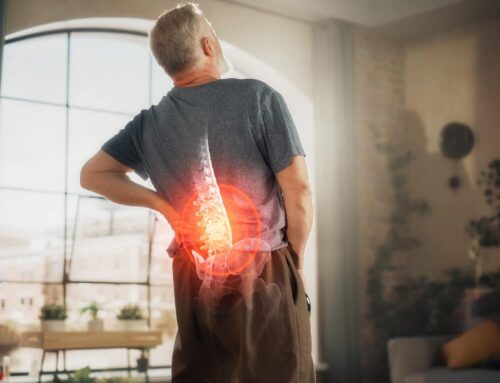At Cary Orthopaedics, our physicians and physical therapists see patients with different types of pain. Pain is how the body signals that something is wrong. Knowing what type of pain we have can help doctors diagnose and treat the issues causing it. Let’s take a closer look at the difference between acute and chronic pain, along with causes and treatment options.
What is acute pain?
Acute pain is a type of pain that typically lasts less than three to six months. It is usually caused by tissue damage, injury or inflammation. Acute pain can be mild, moderate or severe. It is often described as sharp or stabbing.
When you have acute pain, it is the body’s way of responding to an injury or trauma. Injuries such as joint dislocations, broken bones, sprains or strains can cause acute pain. The pain is a warning sign that something is wrong and needs attention. In most cases, the pain goes away once the underlying cause has been treated.
Acute pain can be diagnosed by talking with your orthopaedic doctor about symptoms and any history of injury or illness. You may undergo a series of blood tests, X-rays or scans to determine the cause of the pain.
Treatment for acute pain varies depending on the underlying cause. Treatment options may include:
- The RICE method: rest, ice, compression and elevation
- Over-the-counter pain medications like ibuprofen or acetaminophen
- Prescription pain medications in cases of extreme pain
- An orthotic brace to stabilize the area
- Physical therapy to help restore mobility and function
- Orthopaedic surgery to reconstruct or replace the affected joints, tendons or ligaments
What is chronic pain?
Chronic pain is a type of pain that lasts longer than six months. More than a quarter of people in the United States deal with chronic pain. It can range from mild to severe and may be constant or intermittent. An underlying medical condition or injury may cause chronic pain, but in some cases, the cause is unknown.
A few conditions that cause chronic pain include:
- Arthritis, including osteoarthritis and rheumatoid arthritis
- Degenerative disc disease
- Osteoporosis
- Neuropathy
- Sciatica
- Myofascial issues
- Peroneal tendonitis
- Fibromyalgia
The constant pain or discomfort can be debilitating and significantly impact your quality of life. Treatment for chronic pain is often more complex than treatment for acute pain. It may require an approach that includes medication, physical therapy or other treatments.
One type of treatment, physiatry, was developed to help rehabilitate patients with chronic pain using a holistic approach. It is used to diagnose and treat issues with physical therapy and non-surgical procedures. Your doctor may check muscle and nerve performance for weaknesses or use injections to help with joint or soft tissue pain.
Sometimes surgery may be necessary for chronic pain caused by joint damage, torn ligaments or problems with the spine.
Difference between acute and chronic pain
The main difference between acute and chronic pain is the duration of the pain. Acute pain is short-lived and typically resolves once the underlying cause has been treated. Chronic pain is long-lasting and often requires ongoing management.
Chronic pain can cause emotional stress, which can lead to anxiety or depression. If you are suffering from chronic pain, it is important to work with a doctor to find ways to manage it.
Pain management options
Managing pain effectively requires a comprehensive approach from a physician who understands your unique condition and circumstances. Be honest about your pain, including the type, duration, intensity and associated symptoms or limitations. This information can help your doctor develop an effective treatment plan to relieve pain.
Effective pain management may include a combination of medications, physical therapy or other orthopaedic therapies. In addition to medical treatments, lifestyle changes can help. Consider trying these lifestyle best practices to minimize pain in the body:
- Low-impact exercises such as walking or swimming to reduce pain and tension and increase blood circulation throughout the body
- Eating a diet rich in fruits, vegetables, lean protein and whole grains to reduce joint inflammation
- Relaxation techniques such as deep breathing, meditation or yoga to manage the stress associated with chronic pain
- Keeping a regular bedtime routine improves sleep quality, allowing the body time to heal.
Effectively managing pain can positively impact the quality of your life, but it may require a commitment. Your doctor will want to monitor your results and adjust your plan when you have changes in your pain levels.
Everyone has different pain thresholds. Be honest with your doctor about your pain levels so you can get the treatment you need.
When to see a doctor for chronic or acute pain
Acute pain is usually caused by an underlying condition, so medical attention is needed immediately. Chronic pain can become severe without management strategies in place.
Make an appointment with one of our doctors to ensure you receive the proper care. Cary Orthopaedics has multiple locations in the Triangle with board-certified physicians with years of experience treating pain.






